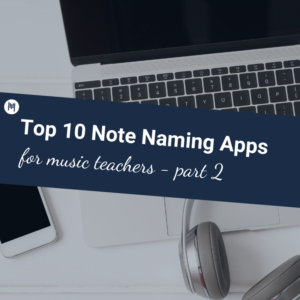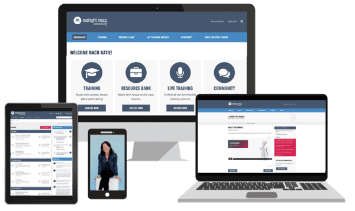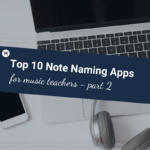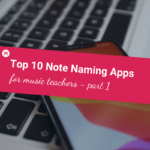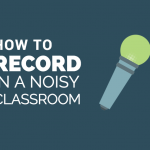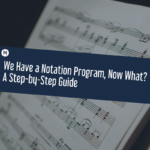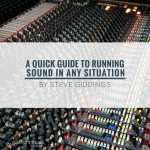
This is a guest post by Katherine Miller and Alison Capelle.
Technology integration is not about using the newest app or creating impressive student products every day. It can happen on so many different levels as shown by the SAMR model!
The SAMR model is a framework created by Dr. Ruben Puentedura that separates classroom technology integration into four different categories: Substitution, Augmentation, Modification and Redefinition. If you would like to learn more about the SAMR model, you can visit our blog post here: Stop! Collaborate! And, Listen! Using SAMR in the Elementary Music Classroom
As elementary music teachers, we start our lesson planning with learning outcomes in mind, not which level of technology integration we want to use. Many times these outcomes are focused on music literacy. While music literacy is not our only focus, it is a large part of the work we do.
So, what does it mean to be literate? Even Google will have a hard time giving you one solid answer. In our opinion, most people would agree that literacy entails so much more than just reading and writing. To be literate, you also need to be able to view, design, speak and listen. Because of this, we believe that music literacy is reading, writing and performing music and is the focus of many of the lesson plans we write.
Once we have decided on which part of music literacy we will be focusing on in our lesson, we can then consider the activities students will do in order to master them. This is where we can consider how technology could be integrated and used as a tool to further student learning.
Given our world’s current situation, technology might be one of the most helpful tools in allowing students to continue performing even if we may not be able to be with them in person! Remember—technology is not our only tool but can be a really useful one! This post will focus on “leveling” up lesson plans where student performance is your outcome.
Simple ways to start to “level” up your lesson plans
Reading Music Notation
A simple way to begin your SAMR journey would be to start in the Substitution level. Something as simple as using your SMARTBoard/ SMART Notebook as a replacement for your white board would be a great place to start!
Instead of having your students writing rhythm patterns on paper and pencil, try opening SMART Notebook and have them manipulate pre-made rhythms to create their rhythm patterns! Already doing activities similar to this? Awesome! Here’s how you could level up!
Let’s say you are preparing So and Mi lessons for 1st grade. You can easily create iconic notation by Googling an image and using the infinite cloner within SMART Notebook to suddenly and easily create iconic notation that can now be manipulated by your students for a more interactive group time lesson.
Although Google Slides does not have an infinite cloner, you could mimic the cloner by making many copies of snowflake, like in the example below, for the students to manipulate. You are now living in the Augmentation world!

For your older students, consider scanning concert music and inputting it into a familiar app like Book Creator, Google Slides, or Notability to give your students access to practice their concert music outside of the school day.
You could even take it one step further and add in the sound file so they could listen as well as follow along in the music! Housing it in one of these locations allows students who don’t have internet access at home to still be able to participate outside of the classroom!
Classroom Instrument Performance
Classroom Instrument Performance is a great place to move into Modification. In our district, many of us teach recorders. Some teachers do choose to teach ukuleles as an alternative. No matter what instrument you choose to use in your classroom, Modification can easily be achieved by restructuring the task.
We’re sure many of you are familiar with Recorder Karate and the time-intensity it takes to individually test or even test in small groups for each level “belt”. By utilizing the Explain Everything app, you can input the written score, a sound file and then have the students video record their performance right within the app to upload to either Google Classroom or Showbie.

We have found that this approach eases performance anxiety within the classroom in regards to testing for a “belt” and allows a more personal relationship between teacher and student by using the feedback option in Google Classroom or Showbie. The use of technology is now becoming an integral part of this activity and therefore falls within the Modification level.
Assessing Students Learning
Another simple way to integrate technology into your music classroom is by using it to assess student learning. We love to do this by using Google Forms.
Google forms is a free option that is accessible to all staff and students regardless of the devices you are using which makes it an easy Substitution from your normal paper and pencil exit tickets or assessments. Even the smallest of students can do this using these few simple tips:
- In your classroom, you can turn your Google Form link into a QR code by using a website like https://www.the-qrcode-generator.com/. Once you have the QR code generated, you can display the code so students can just scan it and access the form without any typing.
- If you are assessing rhythmic or melodic dictation, you can create picture cues to make sure all students are on the correct question by using the “Insert Picture” feature. For instance, in Ms. Miller’s classroom, she would say “We are on the elephant! Give me a thumbs up if you are too! Which option on the elephant page sounds like this?” before clapping the next rhythm.

You can “level up” Google Forms by making them self grading. Click here to see our example and test your own knowledge of SAMR! We created this immediate feedback for you, the learner, by clicking the 3 dots in the bottom right corner of the question when we created it.
Once we selected “Go to a section based on the answer”, two sections were created: one for the correct answer (in this case section 4) and one for the incorrect answers (section 3 in our example). Because this feature of Google Forms provides more functionality to complete an assessment by giving the learner immediate feedback, it would be considered Augmentation.

You can even use Google Forms to Modify student learning by using the response validation feature. Response validation allows you to create rules that students have to follow when they complete your form. The most simple example is not allowing them to skip questions by making it “required”. You can also require that answers contain or not contain important information.
In the picture example, students needed to accurately name the note on the treble clef staff as part of an escape room challenge in 5th grade. If their answer did not contain the correct answer “B”, then they could not proceed onto the next question. The answer area would just appear red on their student device. You can even customize a message students receive. In this example, students were reminded “Every Good Boy Does Fine” to hopefully jumpstart their thinking.

Tip: Response validation is only available for questions that you create as short answer, paragraph or checkboxes.
Distance Music Performance
Choosing whether or not integrating technology is the tool we want to use to design our lesson plans might be an option of the past. Now, our choices start with considering whether we are going to provide synchronous instruction (that is live and in real time) or asynchronous learning (that is recorded and available whenever the student chooses). Both of these options require technology!
In our district, it was an expectation that all learning should be asynchronous, because ALL students should have access to our lessons during distance learning. That means the same quality content that we provided to students in school should be available for them to access at any time during distance learning. We soon discovered the answer to providing this type of instruction was Loom.
Loom is an app available for Mac and PC as well as being a Chrome extension you can add to the Chrome browser. It allows you to record yourself, your computer screen or BOTH! Loom does this by recording your camera picture in the lower corner of the screen while filling the rest of the picture with whatever is visible on your computer screen like your Smart Notebook documents or a website.
Allowing students to be able to see your screen and you at the same time, Augments your music instruction and more closely replicates what your classroom might normally look like.
As of March 12, 2020, Loom Pro is also free to all verified teachers and students at K-12 schools, universities or educational institutions who are using Loom for classroom work by signing up with your school district email address. Unlike other apps that changed their pricing or access in response to COVID-19, Loom has promised it will remain free permanently. To find out more about Loom, you can visit: What is Loom?
Another great, and forever free app, to get to know for asynchronous distance learning is Flipgrid. You can learn more about how to use them to create sing along videos and follow the bouncing ball videos by visiting the Midnight Music channel on YouTube.
Remember—your goal, when using the SAMR model as a guide to integrate technology into your classroom, is NOT to live in redefinition. In fact, we didn’t even provide an example of redefinition this time!
That is because redefinition, or any other level of SAMR, does not lend itself to all purposes or activities. There are times when technology will not even be the tool you choose… and, that’s ok!
We will explore more ways to redefine student learning when we explore ways to integrate technology into composing and improvising activities!
Download your copy
Would you like to take a copy of this article with you? Click the button below and a copy of this will be sent directly into your inbox.
About the writers

Katherine (Katie) Miller holds a Bachelor of Music in Education degree from Otterbein University (Westerville, OH) and a Masters of Educational Leadership from Antioch McGregor Midwest (Yellow Springs, OH). She has 15 years of professional musical experience as a music educator and performer.
She is currently employed by the School District of Waukesha in Waukesha, WI, where she teaches K-5 General Music and serves as a district model tech classroom. She was recognized in 2018 as a WPT Education Innovator by Wisconsin Public Television Education team.
Twitter: K8TMiller
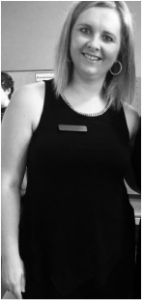
Alison Capelle is a music teacher at Bethesda Elementary, Waukesha, WI, USA. It is her 6th year in the School District of Waukesha and 16th year of teaching. She taught K-4 General Music for 10 years in the Howard-Suamico School District near Green Bay, WI. She received her Master’s Degree in Music Education with an emphasis in Orff Schulwerk from the University of St. Thomas in St. Paul, MN. As an educator, it is her goal to provide a positive learning environment in which students may experience all aspects of music, thus promoting lifelong advocacy for the musical arts. In her spare time, she enjoys singing, playing piano, reading, and spending time with her family.
Looking for More Resources for Music Teachers?
Hello! I’m Katie Argyle – an Australian music technology trainer and consultant with a passion for helping music teachers through my business Midnight Music.
I’m a qualified teacher but no, I don’t currently teach in a school. I help teachers through my online professional development space – the Midnight Music Community – where there are tutorial videos, courses, links and downloadable resources.
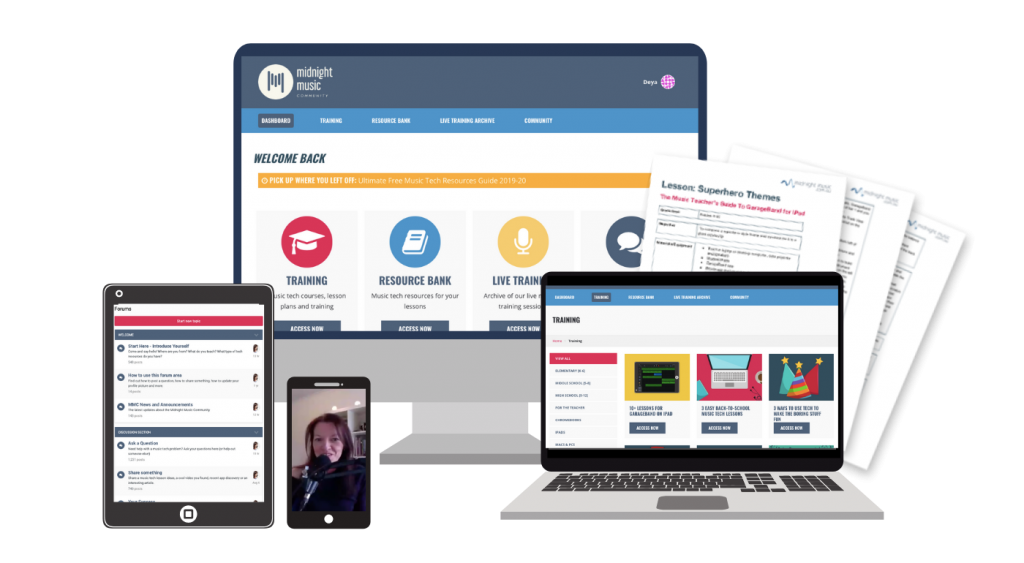
I like to focus on easy ways to incorporate technology into what you are already doing in your music curriculum through a range of creative projects. I also run live workshops and have presented at countless conferences and other music education events.
If you want simple, effective ideas for using technology in music education, I would LOVE to help you inside the Midnight Music Community.



